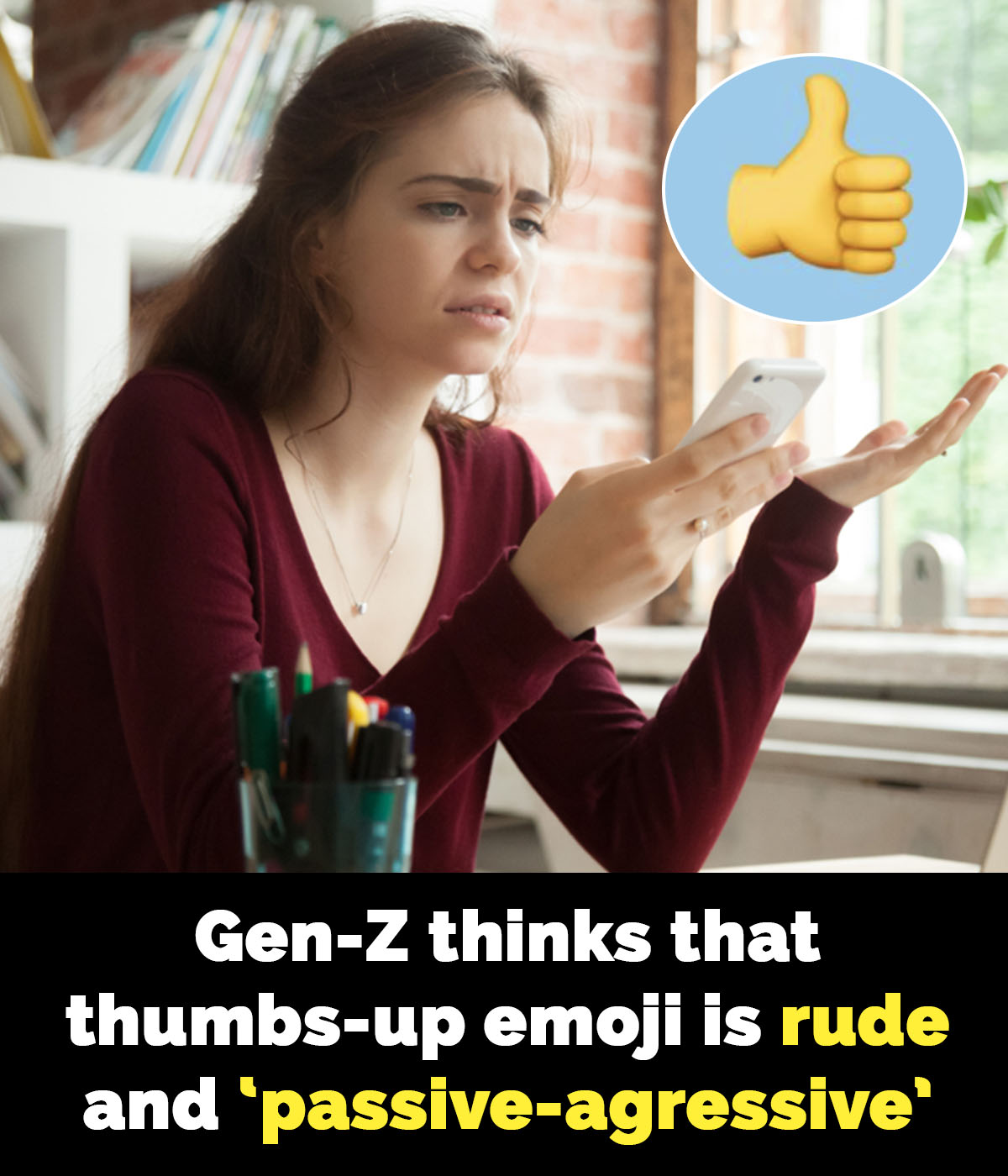Generational gaps often bring about differences in communication styles, and the latest debate revolves around the use of emojis—specifically, the thumbs-up emoji. While previous generations use it as a simple acknowledgment or a sign of approval, many Gen-Z individuals see it as outdated, impersonal, and even passive-aggressive. This shift in perception is raising questions about digital etiquette and workplace communication.

Emojis have long been an essential part of online conversations, helping to add tone and context to messages. However, their meanings have evolved over time, and for Gen-Z, the thumbs-up emoji no longer conveys a friendly or positive affirmation. Instead, it often feels dismissive or sarcastic, making it a source of discomfort in digital interactions.
Why Gen-Z Dislikes the Thumbs-Up Emoji
A recent online discussion shed light on this topic when a young professional shared their thoughts about using the thumbs-up emoji at work:
“I started a new job where we use Microsoft Teams to communicate. The platform only allows a limited set of emoji reactions, and most people respond with a thumbs-up. But to me, it feels unsettling and passive-aggressive. I prefer to respond with a heart reaction or a short message like ‘Great!’ or ‘Thanks!’”
This perspective resonated with many users, including a 24-year-old who commented, “For younger people, the thumbs-up emoji often comes across as passive-aggressive rather than supportive.”
Another participant added, “It likely feels unsettling because it’s impersonal. Based on this discussion, you seem like someone who values more authentic interactions.”
This generational divide in emoji usage highlights how digital communication has changed. While older generations continue to use the thumbs-up emoji as a quick way to acknowledge a message, younger individuals see it as lacking warmth and engagement.
How Emoji Meanings Have Shifted
The thumbs-up emoji is not the only one that has taken on new meanings. Gen-Z has redefined the way several emojis are interpreted:
- The crying-laughing emoji (😂), once widely used to express laughter, is now seen as outdated. Instead, many Gen-Z users opt for the skull emoji (💀) to indicate something is “so funny, I’m dead.”
- The checkmark emoji (✔️), meant to signify confirmation, is often viewed as cold or overly formal.
- Even the classic smiley face (🙂) can sometimes be used sarcastically to imply passive-aggression.
Why It Matters in Workplace Communication
While this shift in emoji usage might seem like a minor issue, it can have real implications, especially in professional settings. A simple thumbs-up emoji may be intended as a neutral or positive response by a Gen-X or Millennial manager, but it could be perceived as dismissive or unenthusiastic by a Gen-Z employee.
As remote work and digital collaboration become more common, understanding these nuances is key to avoiding miscommunication and fostering a more inclusive work environment.
Should You Stop Using the Thumbs-Up Emoji?
Does this mean the thumbs-up emoji should be completely retired? Not necessarily. Context is everything. In casual conversations or among people who interpret it as a neutral or positive gesture, it remains useful. However, in professional settings—especially when communicating with younger colleagues—it may be more effective to use words instead of just an emoji.
A simple “Sounds good!” or “Got it!” can replace the thumbs-up emoji to ensure your message is received as intended.
Bridging the Digital Communication Gap
This debate over the thumbs-up emoji serves as a reminder that communication, both spoken and digital, is always evolving. Just as slang terms change over time, so do emoji meanings. Recognizing these shifts can help create smoother, more effective interactions between different age groups.
What do you think about this shift in emoji etiquette? Have you noticed generational differences in how emojis are used? Share your thoughts in the comments and let others know about this evolving digital language!